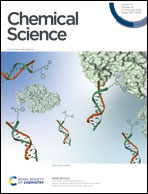Revealing the effect of LiOH on forming a SEI using a Co magnetic “probe”†
Abstract
The solid-electrolyte-interphase (SEI) plays a critical role in lithium-ion batteries (LIBs) because of its important influence on electrochemical performance, such as cycle stability, coulombic efficiency, etc. Although LiOH has been recognized as a key component of the SEI, its influence on the SEI and electrochemical performance has not been well clarified due to the difficulty in precisely controlling the LiOH content and characterize the detailed interface reactions. Here, a gradual change of LiOH content is realized by different reduction schemes among Co(OH)2, CoOOH and CoO. With reduced Co nanoparticles as magnetic “probes”, SEI characterization is achieved by operando magnetometry. By combining comprehensive characterization and theoretical calculations, it is verified that LiOH leads to a composition transformation from lithium ethylene di-carbonate (LEDC) to lithium ethylene mono-carbonate (LEMC) in the SEI and ultimately results in capacity decay. This work unfolds the detailed SEI reaction scenario involving LiOH, provides new insights into the influence of SEI composition, and has value for the co-development between the electrode materials and electrolyte.



 Please wait while we load your content...
Please wait while we load your content...